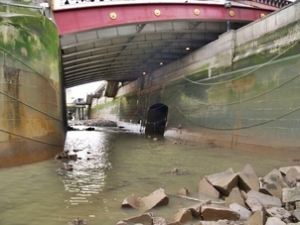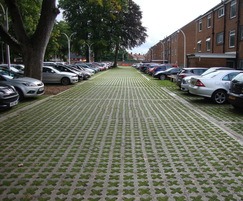MONTHLY BLOG 107, Reasons for unrepentant (relative) Optimism about the coming of Green Politics
If citing, please kindly acknowledge copyright © Penelope J. Corfield (2019)

|
Fig.1 Greta Thunberg (b. 2003), |
In response to my October BLOG about Greener Cities, I got many queries about how I could plausibly state that ‘I am an unrepentant optimist’? In fact, I should have said an ‘unrepentant (relative) optimist’, since it’s clear that not all is currently well with Planet Earth. Things would be better without today’s growing number of major fires, heatwaves, droughts, tempests, floods, icemelts, and rising seas. So I am far from taking the ultra-optimist’s view that all is for the best, in the best of all possible worlds.
But, short of adopting a totally Panglossian outlook, it is possible, indeed necessary, to remain optimistic that actions can be taken in time to control the adverse effects of global warming. Humans are not only problem-creators but also problem- solvers. In this case, the challenge is undeniably great. It will require significant changes from not only big business and big politics (using that term for the networks of national and international institutions) but also from individuals. Global patterns of transport, trade, energy generation; and energy consumption will have to be fundamentally adapted. And at an individual level, people will have to think again about their food and drink; their clothing; their systems for warming houses; their transport; their sports; their holidays; and, indeed, everything. It is asking a lot. Especially as remedial actions will need to be adopted at both macro- and micro-levels simultaneously.
Nonetheless, here are four arguments for (relative) optimism. Governments and big businesses have paid attention to scientific warnings in the past, and then taken successful remedial action. In the 1970s, it was first reported that there was a widening gap in the ozone layer, which shields Planet Earth from harmful ultra-violet radiation. The culprits were chemicals known familiarly as CFCs (chlorofluorocarbons), which were used in aerosol sprays, refrigerators, and blowing agents for foams and packaging materials. An international agreement, known as the Montreal Protocol (1987), then launched decisive change. CFCs were banned.
Over time, all nations around the world have signed up to the Protocol. And in May 2018 a new scientific survey confirmed that the ozone hole has diminished significantly.1 Humans still have to remain vigilant, since the workings of the upper atmosphere are volatile and not easy to study.2 Nonetheless, collective action has been undertaken; and is working.
A second example can be taken from individual actions to renounce a social practice, which was once seen as a great source of personal pleasure. Smoking tobacco in cigars and cigarettes is disappearing. Not at the same rate in all countries around the world. Nor at the same rate among all social classes. Yet, globally, humans are entering into what has been well described as the ‘tobacco-endgame’.3 For example, in the case of Britain, it is hoped that the entire country may become smoke-free by 2030, according to a health report in July 2019.4 Progress in curbing smoking has been triggered by many factors. Medical warnings paved the way from the 1950s onwards, at first cautiously, and then, with more definitive research, more emphatically. Supportive government policies eventually helped too. Above all, however, the slow but eventually decisive shift in individual and communal attitudes was crucial.
Up to and including most of the 1960s, it was considered ‘cool’ to smoke and rude to refuse a friend’s offer of a cigarette. Over time, those attitudes have been completely reversed. Many older people can still remember their personal struggles to quit. Younger people, if they are lucky, never get caught by the habit in the first place. They have no memories of pubs, cinemas, tube trains and other public places being clogged with tobacco fumes – or of their hair and clothes reeking unpleasantly. Again, the battle against smoking is far from won. There are still skirmishes and diversionary tactics (as from e-cigarettes) along the way.5 Yet the trend is becoming clear. As is the crucial role of individual decision-making and active participation in the process.
The story of Prohibition in the USA in 1919 offers an instructive contrast. There the legislative ban on the manufacture, transportation and sale of alcohol was well intentioned. Drinking as such was never made illegal; but aggregate consumption was indeed reduced. However, the policy was introduced too abruptly and without widespread public support. The outcome was evasion on an epic scale, boosting illicit stills and bootlegging gangsters. Other side-effects included a boom in hypocrisy and contempt for the law. Campaigners for a more rational system managed to repeal the ban in 1933, leaving the different US states to adopt their own policies.6 The contrast between alcohol’s survival, despite Prohibition, and nicotine’s slow demise is instructive. Government policies, health advisors and medical practitioners can and do play significant roles. But on big questions which affect people’s intimate personal behaviour on a day-by-day basis, structural policies have to work with, not against, public opinion. Hence the question of how that state-of-many-collective-minds is formed and sustained becomes crucial.
So here is a third reason for (relative) optimism on global warming. Public opinion, fuelled by young people like the Swedish activist Greta Thunberg, is being everywhere encouraged to turn in favour of urgent action. True, the mechanisms for channelling such attitudes into the political system are indirect and slow-working. However, what is happening now seems like part of a Zeitgeist shift of immense significance. The young are numerous, vocal, and willing to campaign. Furthermore, people of all ages know that the human species has no other domicile than Planet Earth. People of many different political persuasions are showing new interest in green policies. And people in all parts of the world are witnessing the increased incidence of freak weather. The voices of sceptics and deniers are waning.7 Getting collective action to harness this rising tide of opinion will depend upon big politics being able and willing to channel the tide successfully – and upon big business becoming aware and either adjusting its actions, or being made to do so. Big demands, which entail challenging big vested interests. Yet these demands are not impossible ones. Vigorous explorations are already being undertaken to find alternative technologies. Such game-changing innovations may alter the nature of the decisions that need to be made. Politicians need to show the same willingness to respond positively, in the face of an accumulating emergency.
And, lastly, a degree of activism (whether driven by pessimism or optimism) is needed from everyone, to add force to the changing Zeitgeist. The alternative is fatalism, which only makes a bad situation worse. True, being optimistic is easier for those with optimistic temperaments. Yet even those who feel nothing but gloom are called upon, in this climate emergency, to transmute their valid anxieties into pressure for change. Relative pessimism can be as great a goad to call for remedial action, as can relative optimism. ‘Climate change constitutes a global emergency!’ ‘Let’s take countervailing action!’ All can lend their voices to swell the tide of public opinion.
ENDNOTES:
1 S. Pereira, report on Ozone Layer dated 1/5/2018 for Newsweek 27 October 2019: https://www.newsweek.com/nasa-hole-earths-ozone-layer-finally-closing-humans-did-something-771922
2 E.A. Parson, Protecting the Ozone Layer: Science and Strategy (Oxford, 2003); S.O. Andersen and K.M. Sarma, Protecting the Ozone Layer: The United Nations History (2002).
3 [British Medical Journal], India: The Endgame for Tobacco Conference (2013).
4 S. Barr, report dated 23 July 2019 in The Independent: https://www.independent.co.uk/life-style/health-and-families/smoking-ban-uk-end-cigarettes-tobacco-health-green-paper-a9016636.html
5 S. Gabb, Smoking and its Enemies: A Short History of 500 Years of the Use and Prohibition of Tobacco (1990).
6 D. Okrent, Last Call: The Rise and Fall of Prohibition (New York, 2010); J.J. Binder, Al Capone’s Beer Wars: A Complete History of Organised Crime in Chicago during Prohibition (Amherst, 2017);
7 G.T. Farmer, Climate Change Science: A Modern Synthesis (Dordrecht, 2013); J. Fessmann (ed.), Strategic Climate Change Communications: Effective Approaches to Fighting Climate Change Denial (Wilmington, 2019); S. Maloney, H. Fuenfgeld and M. Gramberg, Local Action on Climate Change: Opportunities and Constraints (2017).
For further discussion, see Twitter
To read other discussion-points, please click here
To download Monthly Blog 107 please click here







